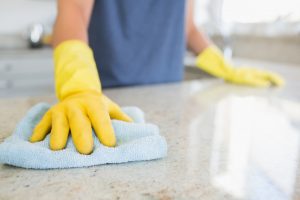Just because you lead an active lifestyle doesn’t mean you have to sacrifice your skin. However, it seems easy to forget to take care of your skin when busy and on the go. If you’re not careful, all that sweating can lead to serious skin problems. Here are the most common skin issues active women face – and how to deal with them.
Sweat Accumulation
Sweat can accumulate on your skin if you don’t shower immediately after working out, creating a breeding ground for bacteria. If you let it dry on your skin, it can settle back into your pores with toxins that can cause breakouts like acne. It can also cause skin irritation and rashes.
How to Deal With It
The best way to prevent this issue is to shower with lukewarm or cool water post-workout. This will help eliminate dirt, sweat, oil, and bacteria collected on your body while keeping your skin refreshed. Showering after exercise cleanses your skin and helps reduce your heart rate and core temperature more quickly. It improves hygiene and helps keep your skin healthy and clear.
If you’re already dealing with zits or acne due to sweat, cute pimple patches can help absorb all the oil and dirt helping your skin heal faster. They protect the affected area from further external damage like friction or bacteria. They are also available in fun, colorful designs, so you can make your skincare routine more fun. Look for patches with drying agents that can relieve your zits and reduce redness.
Dehydration
Your skin can become dry and flaky if you don’t drink enough water while exercising. It may look dull and lifeless. Dehydration also affects the production of healthy oils that help keep your skin plump and supple. Water helps to keep your body temperature stable and prevents your joints from drying out. It helps transport nutrients to give you energy and keep you healthy.
How to Deal With It
Drink about 17-20 ounces of water 2-3 hours before you work out and 8 ounces 20-30 minutes beforehand. Sip on 7-10 ounces of water every 10 to 20 minutes during your routine, and within 30 minutes after exercising, drink another 8-ounce cup of water. A more specific way to determine how much water you should drink during and after exercise is by measuring how much fluid you lose. For every pound lost, consume 16-24 ounces of water.
In addition, use moisturizers that are specifically formulated for active women. Choose natural ingredients like aloe vera, cucumber extract, and shea butter that can nourish and protect your skin. Look for lightweight textures that are not greasy and won’t clog your pores. Moisturizers with SPF can also help protect you from sun damage while you’re active outdoors. Remember that hydration is not only good for your skin, but it also helps balance your electrolytes and makes you feel energized.

Chafing
Chafing occurs when your skin rubs against itself or your clothing. This can happen anywhere on your body but is most common in the areas where your skin is moist or sweaty – like your underarms, inner thighs, and groin. You are at high risk of chafing when exercising in hot weather or wearing tight clothes.
In addition to rubbing, chafing can also be caused by pressure from your straps. This is most likely to happen where your bra or backpack straps intersect across your shoulders or back, but it can also occur on your upper arms. If you use a heart rate monitor, the strap may cause chafing issues along your chest and back.
How to Deal With It
To prevent chafing, opt for workout clothing that is lightweight, breathable, and specifically designed for active women. The fabric should be able to move with your body without restricting movement or causing friction. Synthetic materials like Lycra and spandex are ideal as they wick away sweat and keep you dry. Although cotton fabrics are comfy, they can hold moisture and cause chafing.
To reduce the pressure from straps, look for bras with adjustable straps and multiple hook-and-eye closures. For backpacks, use a hip belt that distributes the weight of your bag more evenly. You can also apply lubricants such as petroleum jelly to reduce friction in areas prone to chafing. Finally, shower and pat your skin dry after working out – this will help keep your skin healthy and free from irritation. You can also apply anti-chafing products like powders, balms, and gels to create a barrier between your skin and your clothing.
An active lifestyle is good for your health – but it’s not always good for your skin. If you’re not careful, all that sweating can lead to serious skin problems. However, by being aware of the issues and taking steps to prevent them, you can enjoy healthy skin – even if you live an active lifestyle.





